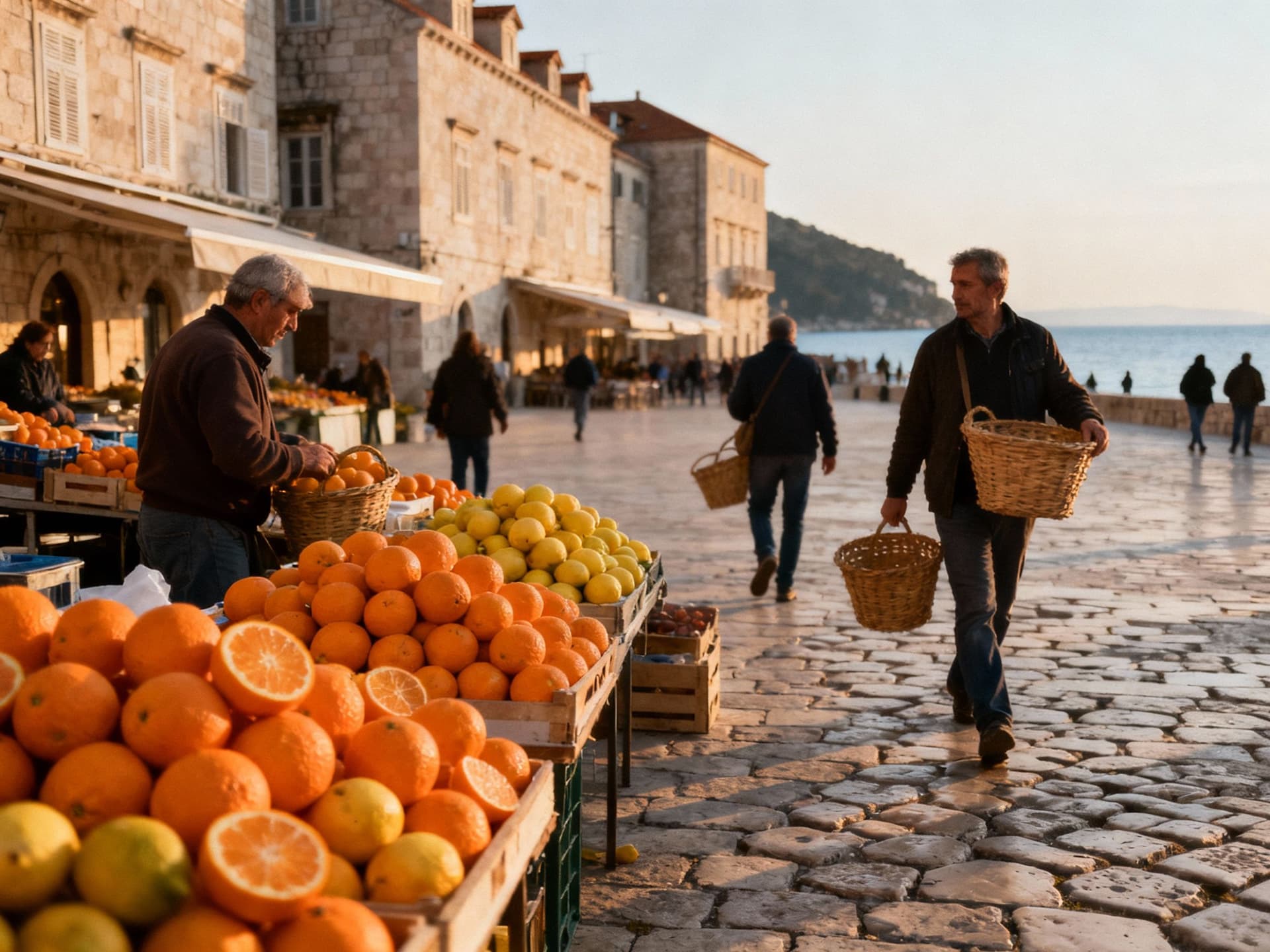Street‑Level Yield Signals: Croatia’s Real Investment Tradeoffs
Croatia pairs high-season rental upside with year‑round tourism growth; model three net‑yield scenarios, use street‑level comps and account for evolving short‑let rules before you buy.
Imagine walking from a sun-warmed kafić on Split’s Marmontova into a narrow lane where laundry and lemon trees hang together — that same lane, in summer, feeds short‑let demand and in winter quietly returns to local life. For many international buyers Croatia is that dual personality: high-season rental upside framed by authentic coastal communities the rest of the year. This piece pairs the lived reality of Croatian neighbourhoods with the numbers investors need — occupancy trends, price-per-square‑metre signals and regulatory changes that materially affect yield. Recent tourism and market data make clear why lifestyle and yield are joined here; read on for specific streets, price points and a practical step sequence to decide if Croatia belongs in your portfolio.
Living Croatia: the daily rhythms that shape value

Coast and city — how place personality maps to demand
The Adriatic remains the engine of rental demand: 2024 saw a continued rise in visitors and overnight stays concentrated on the coast, which drives high seasonal occupancy and strong short‑term revenue potential. Inland cities such as Zagreb show accelerating off‑season performance — city breaks extend the tourist calendar and support longer lettings outside summer. For buyers this means coastal addresses command premium pricing and peak-season yields, while inland urban assets offer steadier year‑round cashflow and lower vacancy risk. Use tourism breakdowns by region to align property type with expected tenancy profiles rather than hoping the market will deliver both extremes.
Neighborhoods that earn — real streets, real signals
Not all coastal addresses are equal. Dubrovnik’s old town and nearby elite coves outperform in capital appreciation but show compressed yields due to purchase price per square metre. In Istria and parts of Split (Veli Varoš, Meje) you’ll find balanced outcomes: respectable price levels with consistent seasonal demand and easier management logistics. Inland towns and smaller Dalmatian islands often present lower entry prices per m² — attractive for yield-focused buyers willing to trade peak-season ADR for higher annual occupancy. Recent average price metrics illustrate these divides; align a neighbourhood’s tourist profile to your return horizon before you bid.
Making the move: market mechanics that change returns

Property types and how they perform for income
Studio and one‑bed apartments in central tourist zones often show the highest gross yields in summer but are most sensitive to regulatory change because they’re commonly used for short‑lets. Larger family homes near beaches generate lower peak yields but benefit from longer bookings and repeat holiday families, smoothing income across the season. New builds carry a premium per m² but lower maintenance surprises; older stone houses can be cheaper to acquire but often require renovation budgets that alter net yield calculations materially. Importantly, regulatory moves to curb short‑lets in 2024–25 make gross‑to‑net yield sensitivity a live risk — model both scenarios before committing.
How local experts convert lifestyle briefs into yield models
Work with agents who combine neighbourhood taste knowledge with yield analysis. Demand local comparables by street and month rather than city averages. Require historical occupancy data and average daily rates (ADR) for the exact property or immediate neighbours. Ask for a sensitivity table showing net yield under three scenarios: full short‑let, hybrid season, and long‑term rent. Insist on a transparent fee schedule that separates marketing, management and compliance costs so you can build a realistic expense line in your spreadsheet.
Insider knowledge: policy, culture and practical red flags
Policy signals matter: 2024 proposals to shift tax burdens and clamp down on short‑term rentals aim to rebalance housing supply and affect profitability for owners who relied heavily on holiday lettings. Tourism remained strong in 2024 with coastal overnight stays dominating, but legislative changes mean a previously reliable short‑let yield stream now has plausible downside scenarios. Keep a close eye on municipal rules — some Adriatic towns have introduced stricter registration and occupancy reporting that increase operating costs and compliance time. Treat regulation as a scenario variable in your return model, not an afterthought.
Cultural cues and day‑to‑day living that affect tenant profiles
Daily rhythms — late lunches, local markets, and seasonal festivals — shape tenancy lengths and amenity expectations. In coastal towns tenants prize sea views, outdoor dining space and easy parking for summer arrivals; in Zagreb renters prioritise proximity to tram lines, international schools and co‑working hubs. Language is a small barrier; basic Croatian facilitates local paperwork and neighbourhood goodwill, but many agents and service providers operate in English, German or Italian. Factor cultural preferences into fit‑out decisions: quality shutters, air conditioning and durable outdoor furniture often increase bookings and lower wear‑and‑tear.
Final steps: a practical checklist and next moves. First, obtain street‑level comparables and a 12‑month occupancy schedule from your shortlisted agent. Second, run a three‑scenario net yield model (short‑let, hybrid, long‑let) that includes proposed local taxes, management fees and an annual reserve for maintenance equal to 1–2% of purchase price. Third, verify municipal short‑let rules and register any required licences before advertising. If you want a balanced combination of lifestyle and dependable yield, favour well‑connected urban or accessible coastal neighbourhoods over purely seasonal micro‑locations. With these steps you’ll translate the Croatia you fell in love with into a defensible investment case.
Danish relocation specialist who moved to Cyprus in 2018, helping Nordic clients diversify with rental yields and residency considerations.


